Abstract
The dog behaves like man in his ability to utilize dietary hemoglobin iron and, therefore, is an excellent model in which to study the mechanisms of absorption. Heme is taken up intact into the epithelial cell of the small intestine but the iron appears in the plasma in a nonheme form. A substance is present in mucosal homogenates which is capable of releasing iron from a hemoglobin substrate in vitro. This has a molecular weight greater than 64,000, and appears to behave as an enzyme. There is no difference in the in vitro, effective concentration of the hemesplitting substance in the mucosa of iron-loaded and iron-deficient dogs to explain in vivo changes in iron absorption. However, the rate at which the heme-splitting substance works in vivo appears to be increased by the removal of the nonheme-iron-end product from the epithelial cell to the plasma. Reduction of the heme-iron content within the epithelial cell may then enhance uptake from the lumen. These studies suggest that the labile nonheme-iron content of the intestinal epithelial cell determines its ability to accept heme as well as ionized iron from the lumen.
Full text
PDF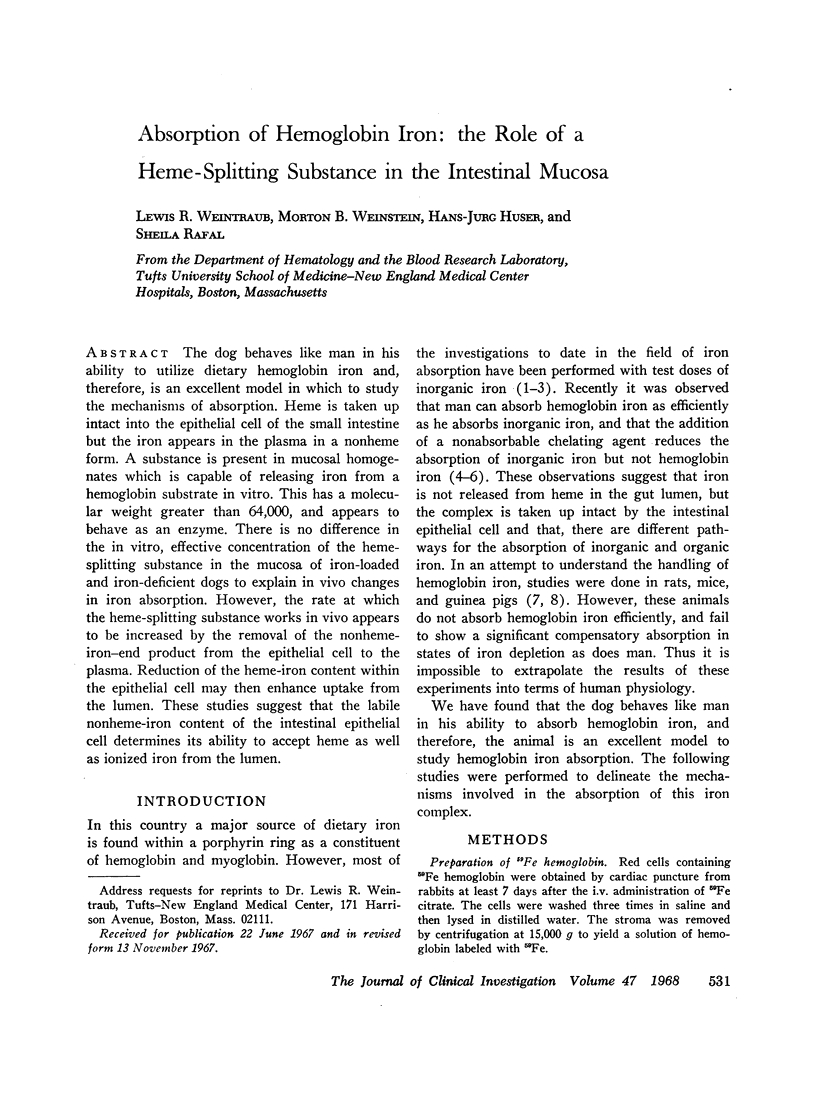
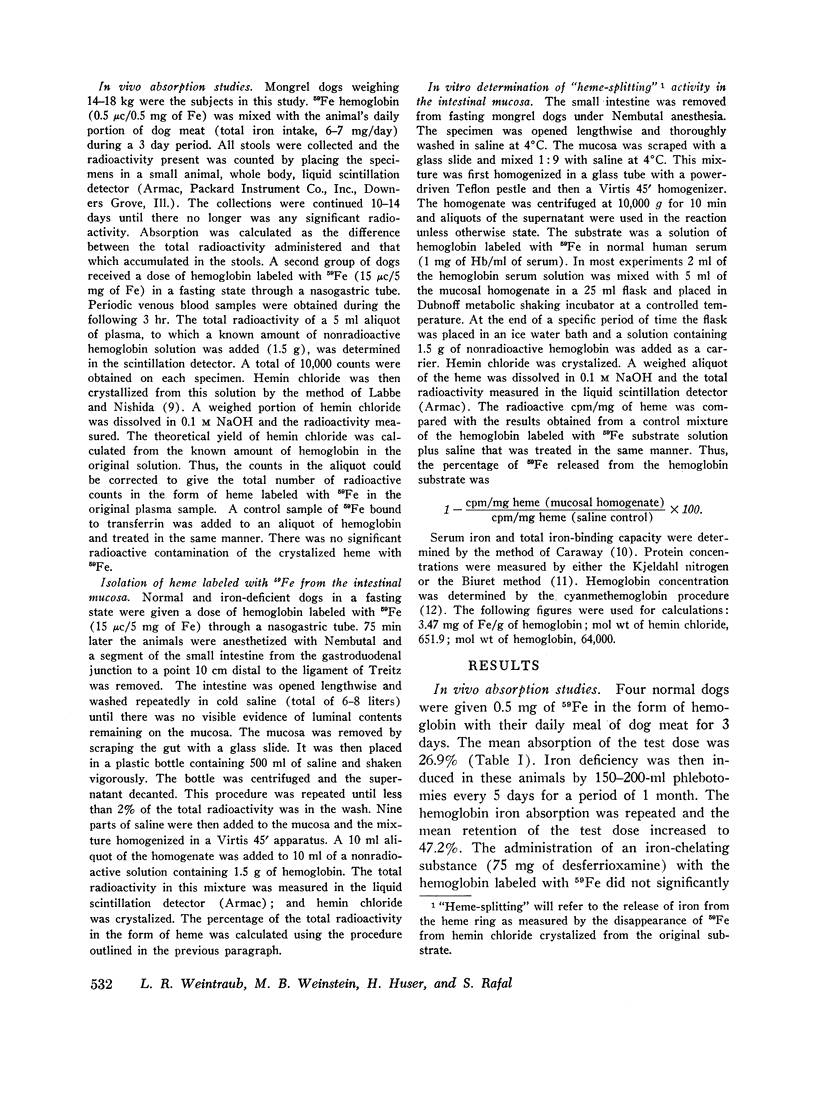
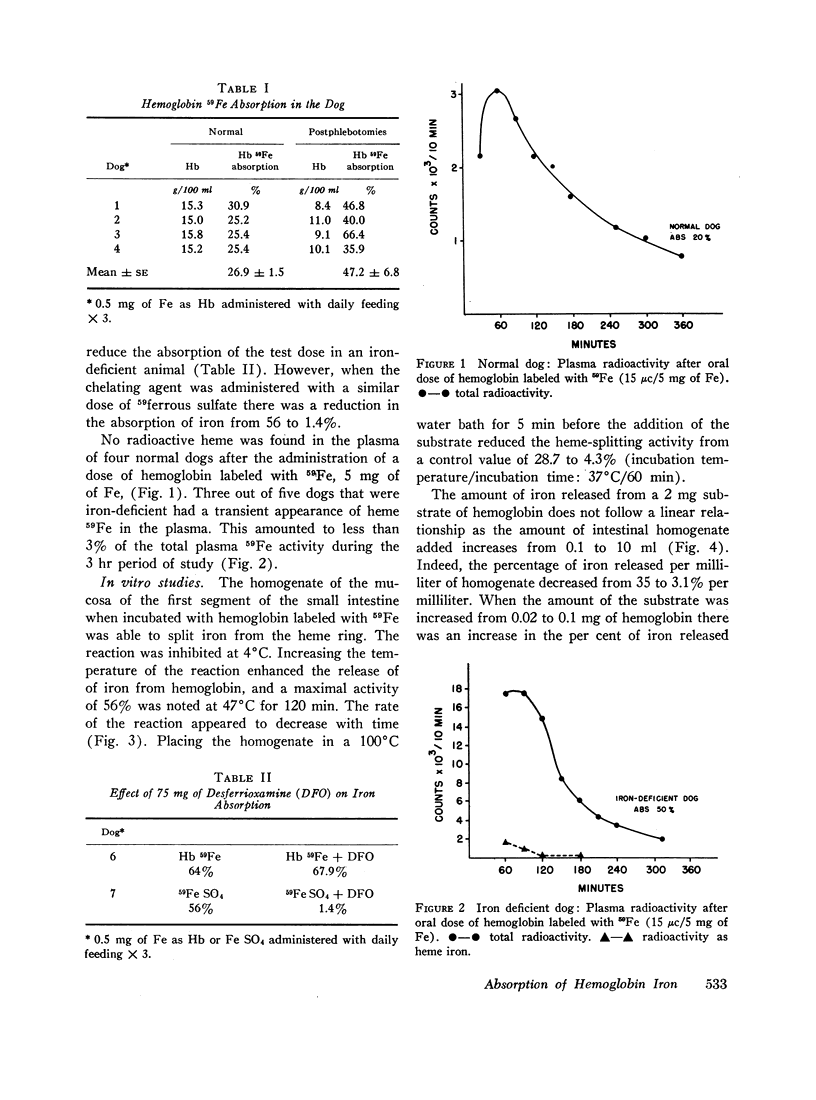
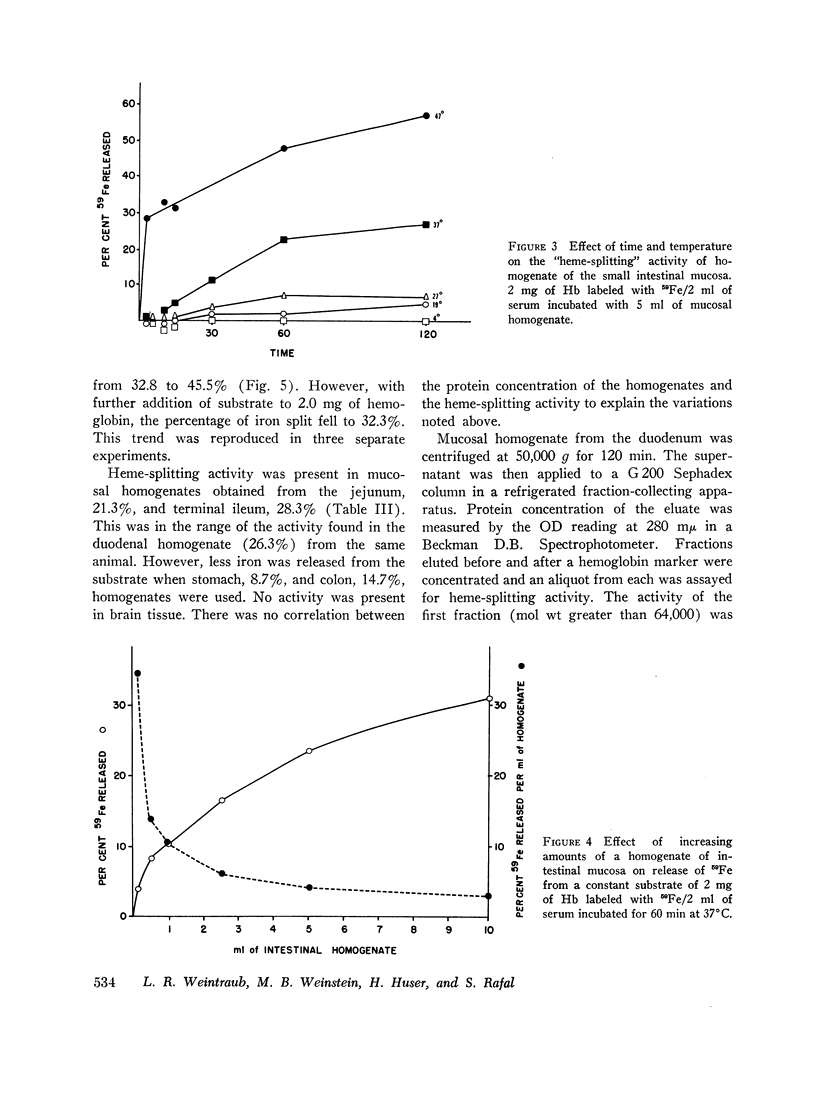
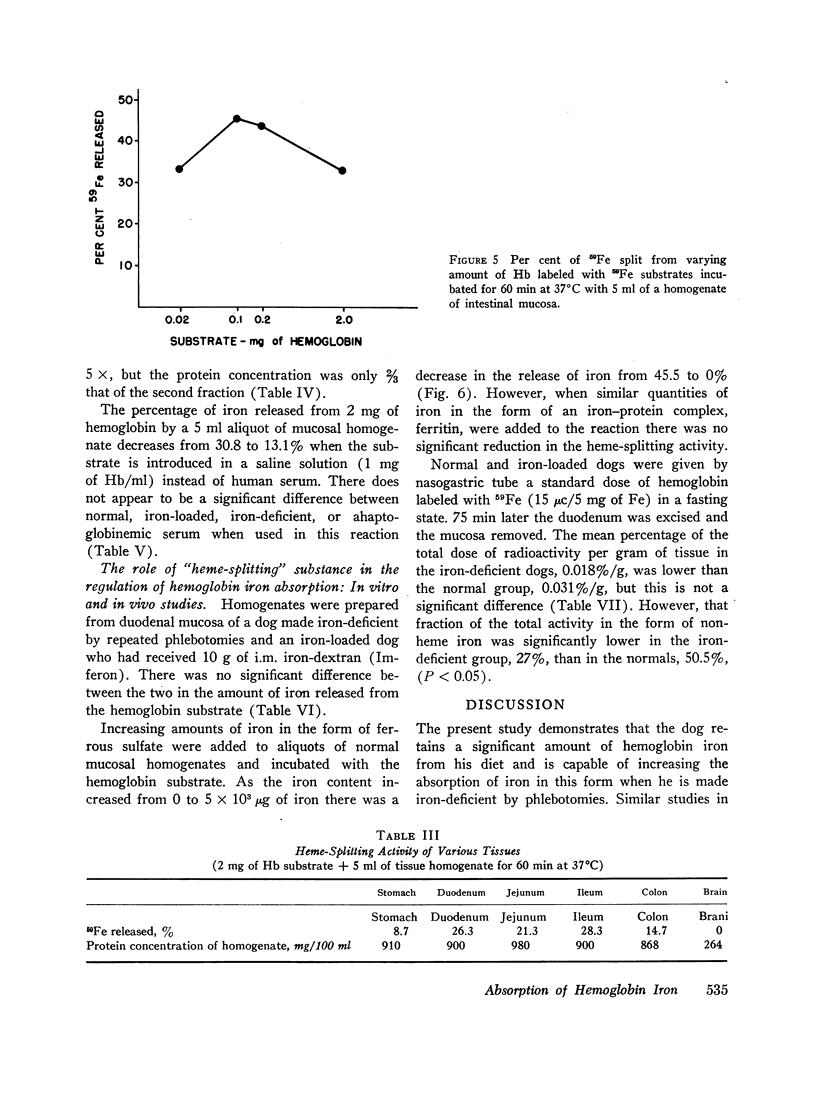
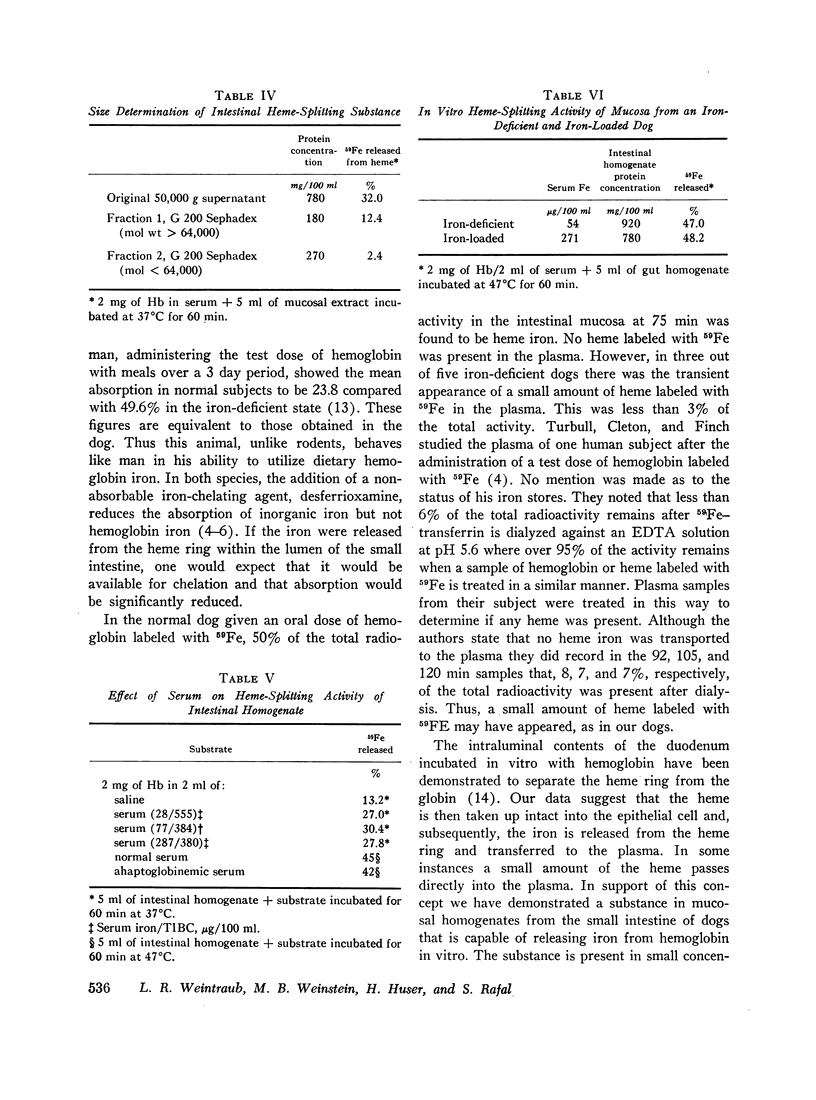
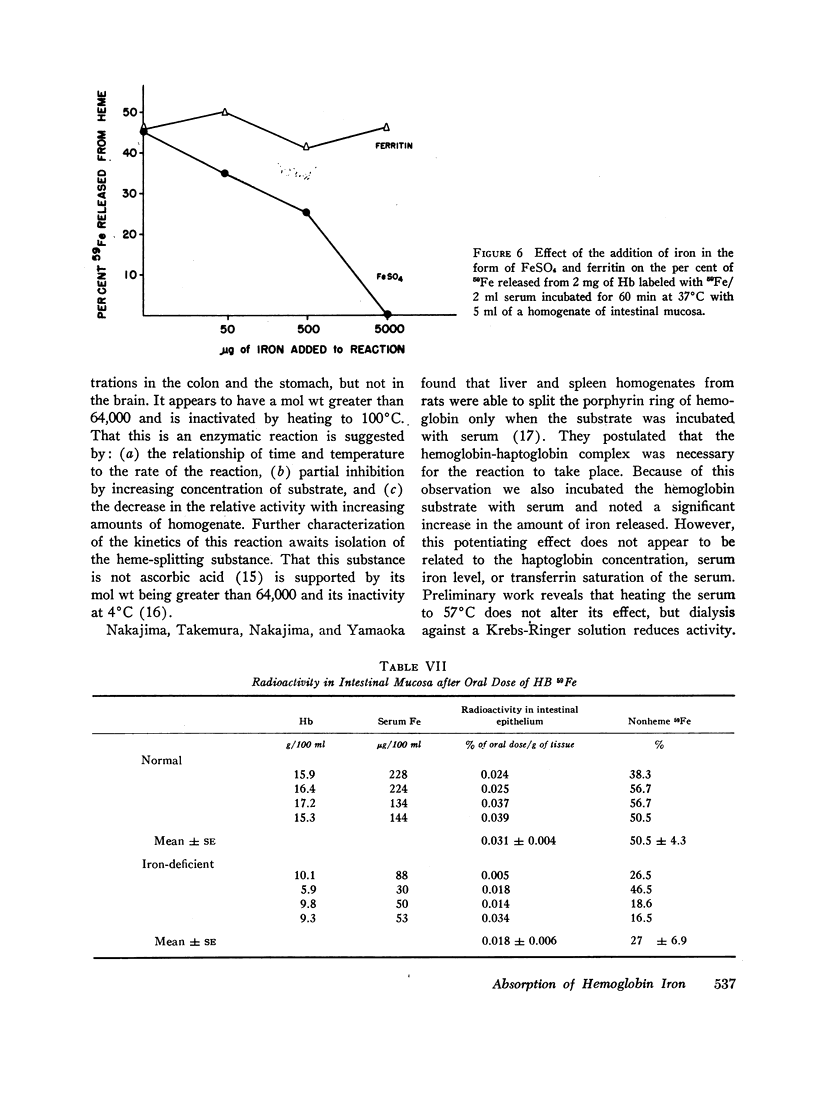
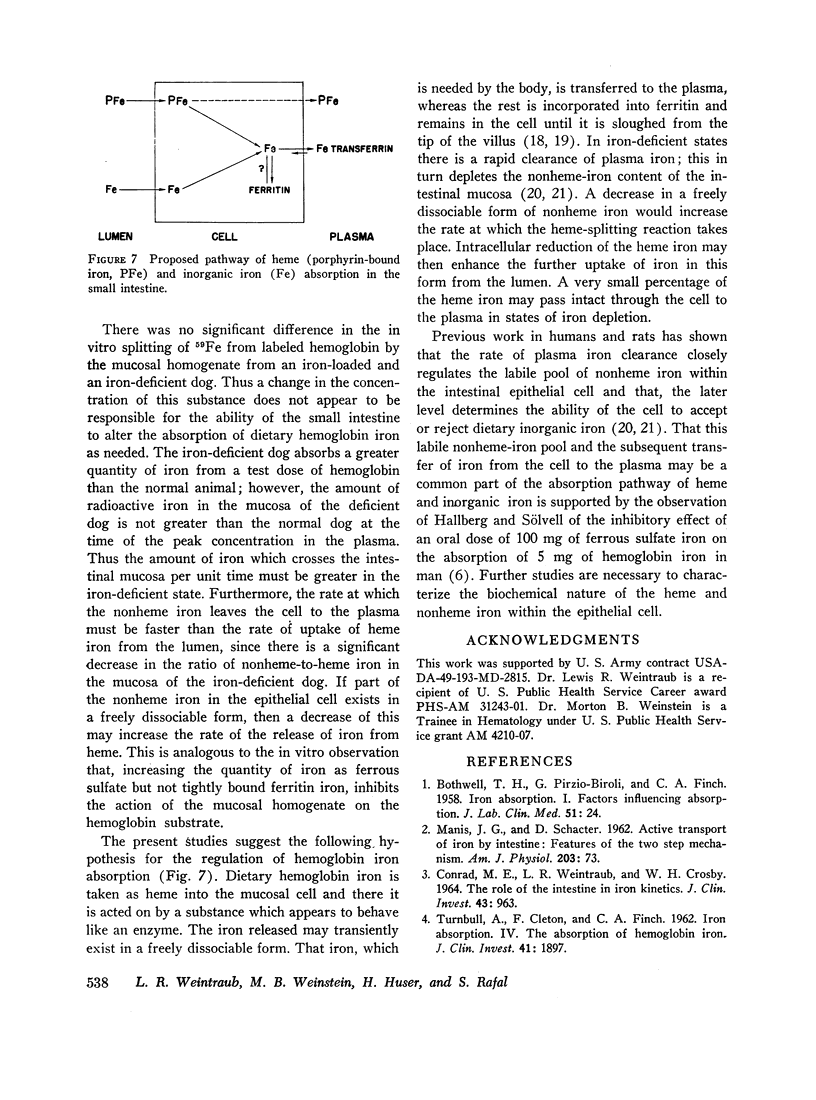
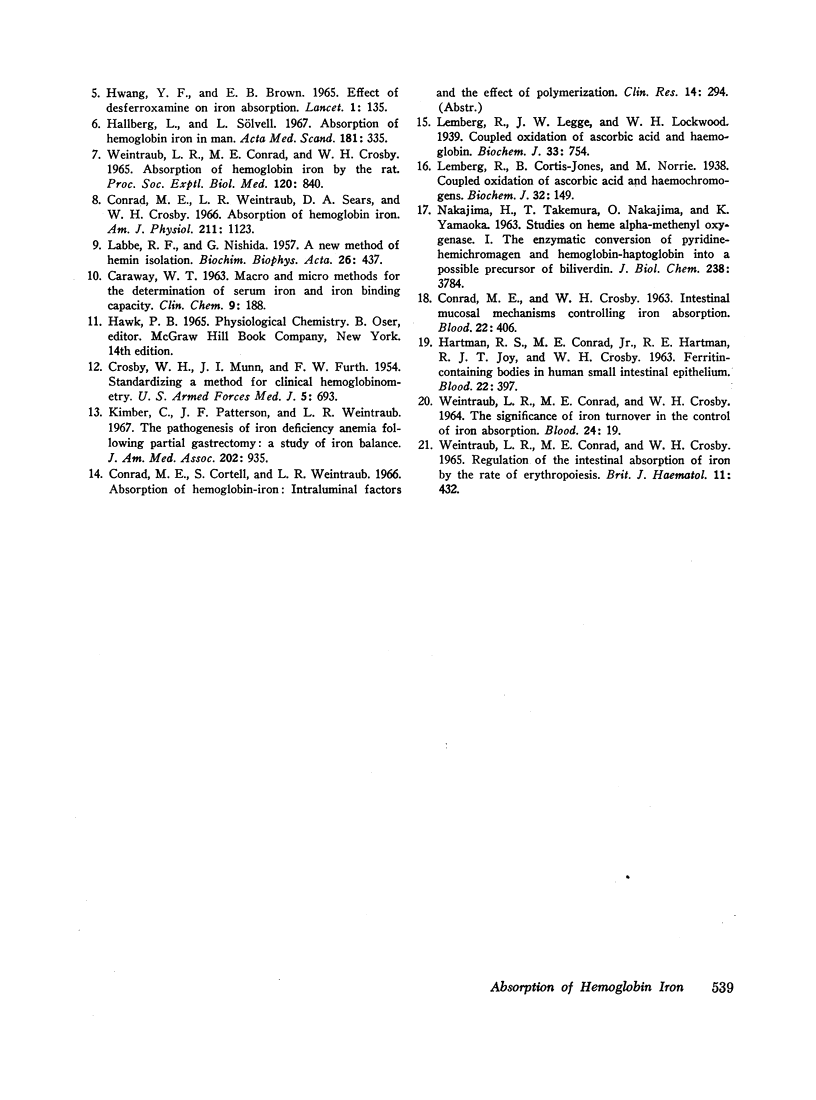
Selected References
These references are in PubMed. This may not be the complete list of references from this article.
- BOTHWELL T. H., PIRZIO-BIROLI G., FINCH C. A. Iron absorption. I. Factors influencing absorption. J Lab Clin Med. 1958 Jan;51(1):24–36. [PubMed] [Google Scholar]
- CARAWAY W. T. Macro and micro methods for the determination of serum iron and iron-binding capacity. Clin Chem. 1963 Apr;9:188–199. [PubMed] [Google Scholar]
- CONRAD M. E., Jr, CROSBY W. H. INTESTINAL MUCOSAL MECHANISMS CONTROLLING IRON ABSORPTION. Blood. 1963 Oct;22:406–415. [PubMed] [Google Scholar]
- CONRAD M. E., WEINTRAUB L. R., CROSBY W. H. THE ROLE OF THE INTESTINE IN IRON KINETICS. J Clin Invest. 1964 May;43:963–974. doi: 10.1172/JCI104982. [DOI] [PMC free article] [PubMed] [Google Scholar]
- CROSBY W. H., MUNN J. I., FURTH F. W. Standardizing a method for clinical hemoglobinometry. U S Armed Forces Med J. 1954 May;5(5):693–703. [PubMed] [Google Scholar]
- Conrad M. E., Weintraub L. R., Sears D. A., Crosby W. H. Absorption of hemoglobin iron. Am J Physiol. 1966 Nov;211(5):1123–1130. doi: 10.1152/ajplegacy.1966.211.5.1123. [DOI] [PubMed] [Google Scholar]
- HARTMAN R. S., CONRAD M. E., Jr, HARTMAN R. E., JOY R. J., CROSBY W. H. FERRITIN-CONTAINING BODIES IN HUMAN SMALL INTESTINAL EPITHELIUM. Blood. 1963 Oct;22:397–405. [PubMed] [Google Scholar]
- Hallberg L., Sölvell L. Absorption of hemoglobin iron in man. Acta Med Scand. 1967 Mar;181(3):335–354. doi: 10.1111/j.0954-6820.1967.tb15161.x. [DOI] [PubMed] [Google Scholar]
- Hwang Y. F., Brown E. B. Effect of desferrioxamine on iron absorption. Lancet. 1965 Jan 16;1(7377):135–137. doi: 10.1016/s0140-6736(65)91093-7. [DOI] [PubMed] [Google Scholar]
- Kimber C., Patterson J. F., Weintraub L. R. The pathogenesis of iron deficiency anemia following partial gastrectomy. A study of iron balance. JAMA. 1967 Dec 4;202(10):935–938. [PubMed] [Google Scholar]
- LABBE R. F., NISHIDA G. A new method of hemin isolation. Biochim Biophys Acta. 1957 Nov;26(2):437–437. doi: 10.1016/0006-3002(57)90033-1. [DOI] [PubMed] [Google Scholar]
- Lemberg R., Cortis-Jones B., Norrie M. Coupled oxidation of ascorbic acid and haemochromogens. Biochem J. 1938 Jan;32(1):149–170. doi: 10.1042/bj0320149. [DOI] [PMC free article] [PubMed] [Google Scholar]
- Lemberg R., Legge J. W., Lockwood W. H. Coupled oxidation of ascorbic acid and haemoglobin. I. Biochem J. 1939 May;33(5):754–758. doi: 10.1042/bj0330754. [DOI] [PMC free article] [PubMed] [Google Scholar]
- NAKAJIMA H., TAKEMURA T., NAKAJIMA O., YAMAOKA K. STUDIES ON HEME ALPHA-METHENYL OXYGENASE. I. THE ENZYMATIC CONVERSION OF PYRIDINE-HEMICHROMOGEN AND HEMOGLOBIN-HAPTOGLOBIN INTO A POSSIBLE PRECURSOR OF BILIVERDIN. J Biol Chem. 1963 Nov;238:3784–3796. [PubMed] [Google Scholar]
- TURNBULL A., CLETON F., FINCH C. A. Iron absorption. IV. The absorption of hemoglobin iron. J Clin Invest. 1962 Oct;41:1897–1907. doi: 10.1172/JCI104646. [DOI] [PMC free article] [PubMed] [Google Scholar]
- WEINTRAUB L. R., CONRAD M. E., CROSBY W. H. REGULATION OF THE INTESTINAL ABSORPTION OF IRON BY THE RATE OF ERYTHROPOIESIS. Br J Haematol. 1965 Jul;11:432–438. doi: 10.1111/j.1365-2141.1965.tb06605.x. [DOI] [PubMed] [Google Scholar]
- WEINTRAUB L. R., CONRAD M. E., CROSBY W. H. THE SIGNIFICANCE OF IRON TURNOVER IN THE CONTROL OF IRON ABSORPTION. Blood. 1964 Jul;24:19–24. [PubMed] [Google Scholar]
- Weintraub L. R., Conrad M. E., Crosby W. H. Absorption of hemoglobin iron by the rat. Proc Soc Exp Biol Med. 1965 Dec;120(3):840–843. doi: 10.3181/00379727-120-30670. [DOI] [PubMed] [Google Scholar]


